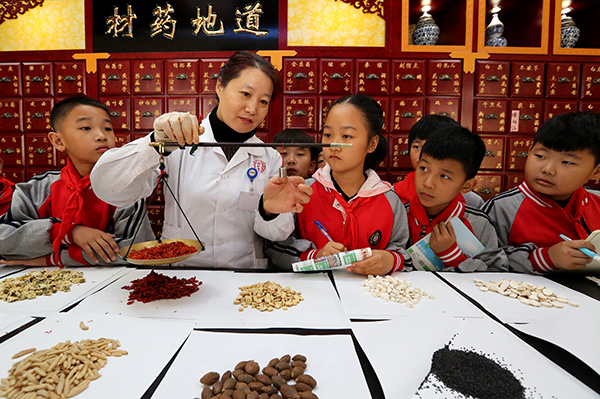 |
|
Elementary school students looks at a pharmacist picking and weighing traditional Chinese herbs in Zaozhuang, Shandong province, in October.[Photo by Ji Zhe/For China Daily] |
The latest TCM international standard, released in February by the ISO, was formulated for the quality control of the Isatis indigotica root - banlangen or Indigowoad root in English. It is one of the most widely used traditional Chinese herb for the prevention and cure of conditions such as cold and flu.
The ISO standard, which specifies the minimum quality requirements and testing methods for the herb, was proposed by a research team from the Shanghai University of Traditional Chinese Medicine in 2014. The research team referred to existing domestic standards for the herb while establishing the ISO standard, which covers testing methods and content limit of some pesticides and heavy metals in the herb.
In addition to the team, experts from five other countries including Germany, Canada and Australia, participated in the formulation of the ISO standard, according to Wang Zhengtao, a professor of traditional Chinese medicine.
Wang said that the release of the ISO standard for banlangen will play an important role in improving international recognition and popularization of the herb, and facilitating international trade of the herb.
More international standards on traditional Chinese herbs are being established, and some may be completed over the next year.
In addition to banlangen, some other common traditional Chinese herbs used as major ingredients for TCM have had ISO standards in recent years, including sanqi or Panax notoginseng root which relieves pain and stops bleeding, and jinyinhua or the Lonicera japonica flower, which relieves conditions such as fever and headache.